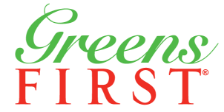While traditional Ayurvedic medicine used this tree to heal or prevent hundreds of diseases, scientific evidence is accumulating to support many of the healing properties of Moringa. Some of its chemical compounds have been isolated and described. Around the world Moringa is the subject of legends and praise, awe and respect – so much so that it is also called “Miracle Tree,” “Mother’s Best Friend,” and “Never Die.”
Below you will find a selection of abstracts from scientific articles published about Moringa Oleifera:
Moringa oleifera: A food plant with multiple medicinal uses.
Anwar F, Latif S, Ashraf M, Gilani AH. Department of Chemistry, University of Agriculture, Faisalabad-38040, Pakistan. [email protected] Moringa oleifera Lam (Moringaceae) is a highly valued plant, distributed in many countries of the tropics and subtropics. It has an impressive range of medicinal uses with high nutritional value. Different parts of this plant contain a profile of important minerals, and are a good source of protein, vitamins, beta-carotene, amino acids and various phenolics. The Moringa plant provides a rich and rare combination of zeatin, quercetin, beta-sitosterol, caffeoylquinic acid and kaempferol. In addition to its compelling water purifying powers and high nutritional value, M. oleifera is very important for its medicinal value. Various parts of this plant such as the leaves, roots, seed, bark, fruit, flowers and immature pods act as cardiac and circulatory stimulants, possess antitumor, antipyretic, antiepileptic, antiinflammatory, antiulcer, antispasmodic, diuretic, antihypertensive, cholesterol lowering, antioxidant, antidiabetic, hepatoprotective, antibacterial and antifungal activities, and are being employed for the treatment of different ailments in the indigenous system of medicine, particularly in South Asia. This review focuses on the detailed phytochemical composition, medicinal uses, along with pharmacological properties of different parts of this multipurpose tree.
PMID: 17089328 [PubMed – indexed for MEDLINE] Bioresource Technology. 2007 Jan;98(1):232-6. Epub 2006 Jan 6.
Anti-fungal activity of crude extracts and essential oil of Moringa oleifera Lam.
Chuang PH, Lee CW, Chou JY, Murugan M, Shieh BJ, Chen HM. Institute of Bioagricultural Sciences, Academia Sinica, Taipei 115, Taiwan, ROC. Investigations were carried out to evaluate the therapeutic properties of the seeds and leaves of Moringa oleifera Lam as herbal medicines. Ethanol extracts showed anti-fungal activities in vitro against dermatophytes such as Trichophyton rubrum, Trichophyton mentagrophytes, Epidermophyton floccosum, and Microsporum canis. GC-MS analysis of the chemical composition of the essential oil from leaves showed a total of 44 compounds. Isolated extracts could be of use for the future development of anti-skin disease agents.
PMID: 16406607 [PubMed – indexed for MEDLINE] J Med Food. 2002 Fall;5(3):171-7.
Hepatoprotective activity of Moringa oleifera on antitubercular drug-induced liver damage in rats.
Pari L, Kumar NA. Department of Biochemistry, Faculty of Science, AnnamalaiUniversity, Annamalai Nagar, Tamil Nadu – 608 002, India. [email protected] Moringa oleifera Lam (Moringaceae), commonly known as “Drumstick,” is used in Indian folk medicine for the treatment of various illness. We have evaluated the hepatoprotective effect of an ethanolic extract of M. oleifera leaves on liver damage induced by antitubercular drugs such as isoniazid (INH), rifampicin (RMP), and pyrazinamide (PZA) in rats. Oral administration of the extract showed a significant protective action made evident by its effect on the levels of glutamic oxaloacetic transaminase (aspartate aminotransferase), glutamic pyruvic transaminase (alanine aminotransferase), alkaline phosphatase, and bilirubin in the serum; lipids, and lipid peroxidation levels in liver. This observation was supplemented by histopathological examination of liver sections. The results of this study showed that treatment with M. oleifera extracts or silymarin (as a reference) appears to enhance the recovery from hepatic damage induced by antitubercular drugs.
PMID: 12495589 [PubMed – indexed for MEDLINE] J Med Food. 2003 Fall;6(3):255-9.
Antioxidant action of Moringa oleifera Lam. (drumstick) against anti tubercular drug induced lipid peroxidation in rats.
Ashok Kumar N, Pari L. Department of Biochemistry, Faculty of Science, Annamalai University, Annamalai Nagar-608 002, Tamil Nadu, India. The protective effect of Moringa oleifera Lam. (Moringaceae) on hepatic marker enzymes, lipid peroxidation, and antioxidants was investigated during antitubercular drug (isoniazid, rifampicin, and pyrazinamide)-induced toxicity in rats. Enhanced hepatic marker enzymes and lipid peroxidation of antitubercular drug treatment was accompanied by a significant decrease in the levels of vitamin C, reduced glutathione, superoxide dismutase, catalase, glutathione peroxidase, and glutathione S-transferase. Administration of Moringa oleifera extract and silymarin significantly decreased hepatic marker enzymes and lipid peroxidation with a simultaneous increase in the level of antioxidants. We speculate that Moringa oleifera extract exerts its protective effects by decreasing liver lipid peroxides and enhancing antioxidants. PMID: 14585192 [PubMed – indexed for MEDLINE]
J Ethnopharmacol. 2003 Jun;86(2-3):191-5.
Hypocholesterolemic effects of crude extract of leaf of Moringa oleifera Lam in high-fat diet fed wistar rats.
Ghasi S, Nwobodo E, Ofili JO. Department of Pharmacology and Therapeutics, College of Medicine, University of Nigeria, Enugu. The leaves of Moringa oleifera Lam (Moringaceae) are used by the Indians in their herbal medicine as a hypocholesterolemic agent in obese patients. The scientific basis for their use in hypercholesterolemia was therefore examined. It was found that administration of the crude leaf extract of Moringa oleifera along with high-fat diet decreased the high-fat diet-induced increases in serum, liver, and kidney cholesterol levels by 14.35% (115-103.2 mg/100 ml of serum), 6.40% (9.4-8.8 mg/g wet weight) and 11.09% (1.09-0.97 mg/g wet weight) respectively. The effect on the serum cholesterol was statistically significant. No significant effect on serum total protein was observed. However, the crude extract increased serum albumin by 15.22% (46-53 g/l). This value was also found to be statistically significant. It was concluded that the leaves of Moringa oleifera have definite hypocholesterolemic activity and that there is valid pharmacological basis for employing them for this purpose in India.
PMID: 10661880 [PubMed – indexed for MEDLINE Many scientific journals, newspapers articles and books have been written about Moringa oliefera. Below you will find a small selection of extracts.
Many scientific journals, newspapers articles and books have been written about Moringa oliefera.
Below you will find a small selection of extracts. Gnarly Tree can cure the ill, purify water and feed the hungry “Scientifically speaking, Moringa sounds like magic. It can rebuild weak bones, enrich anaemic blood and enable a malnourished mother to nurse her starving baby. Ounce for ounce, it has the calcium of four glasses of milk, the Vitamin C of seven oranges and the potassium of three bananas. Sounds like your Power Bar, you say? Well, consider this: A dash of Moringa can make dirty water drinkable. Doctors use it to treat diabetes in West Africa and high blood pressure in India.”
Mark Fritz – Los Angeles Times
A food plant with multiple medicinal uses
“The Moringa plant provides a rich and rare combination of zeatin, quercetin, beta-sitosterol, caffeoylquinic acid and kaempferol.” “Various parts of this plant act as cardiac and circulatory stimulants, possess antiinflammatory, antiulcer, antispasmodic,, antihypertensive, cholesterol lowering, antioxidant, antidiabetic, hepatoprotective, antibacterial and antifungal activities.”
University of Agriculture, Faisalabad PubMed ID: 17089328
Anti-fungal activity of crude extracts and essential oil of Moringa oleifera Lam “GC-MS analysis of the chemical composition of the essential oil from leaves showed a total of 44 compounds. Isolated extracts could be of use for the future development of anti-skin disease agents.”
Institute of Bioagricultural Sceinces, Academia Sinica, Taipei 115, Taiwan, ROC. PubMed ID: 16406607
Moringa, Natures Medicine Cabinet
“It is a remarkable tree whose leaves, pods and flowers have 7 times the Vitamin C found in oranges, 4 times the Vitamin A of carrots, 3 times the iron of spinach, 4 times as much calcium as milk and 3 times the potassium of bananas.”
Stanford Holst
Moringa oleifera (The Kelor Tree)
“Although few people have heard of it today, Moringa could soon become one of the world’s most valuable plants.”
U.S National Academy of Sciences Noel Vietmeyer
The in vitro and ex vivo antioxidant properties, hypolipidaemic and antiatherosclerotic activities of water extract of Moringa oleifera Lam.
“The results indicate that this plant possesses antioxidant, hypolipidaemic and antiatherosclerotic activities and has therapeutic potential for the prevention of cardiovascular diseases.”
Department of Pharmacology, Faculty of Medicine Siriraj Hospital, Mahidol University PubMed ID : 18249514
Hypocholesterolemic effects of crude extract of leaf of Moringa oleifera Lam in high-fat diets.
“It was found that administration of the crude leaf extract of Moringa oleifera along with high-fat diet decreased the high-fat diet-induced increases in serum, liver, and kidney cholesterol levels by 14.35% (115-103.2 mg/100 ml of serum), 6.40% (9.4-8.8 mg/g wet weight) and 11.09% (1.09-0.97 mg/g wet weight) respectively.”
“This value was also found to be statistically significant. It was concluded that the leaves of Moringa oleifera have definite hypocholesterolemic activity”
Department of Pharmacology and Therapeutics, University of Nigeria, Enugu. PubMed ID: 10661880
Nutrition
Barminas, J.T .;Charles, Milam; Emmanuel, D. “Mineral composition of non-conventional leafy vegetables.” Plant Foods for Human Nutrition 53.1 (1998): 29-36.
Ching, L.S.; Mohamed, S. “Alpha-tocopherol content in 62 edible tropical plants.” Journal of Agricultural and Food Chemistry 49.6 (2001 Jun): 3101-5.
Freiberger, C.E.; Vanderjagt, D.J.; Pastuszyn, A., and others. “Nutrient content of the edible leaves of seven wild plants from Niger.” Plant Foods for Human Nutrition 53.1 (1998): 57-69.
Geervani, P.; Devi, A. “Influence of protein and fat on the utilisation of carotene from drumstick (Moringa oleifera) leaves.” The Indian Journal of Medical Research 74.0 (1981 Oct): 548-53.
Girija, V.; Sharada, D.; Pushpamma, P. “Bioavailability of thiamine, riboflavin and niacin from commonly consumed green leafy vegetables in the rural areas of Andhra Pradesh in India.” International Journal for Vitamin and Nutrition Research 52.1 (1982): 9-13.
Hosken, Fran. P., ed. “Stopping Malnutrition in the Tropics with the Moringa Tree.” Women’s International Network News 26.2 (2000): 47-48.
Lockett, Cassius; Calvert, Christopher; Grivetti, Louis. “Energy and micronutrient composition of dietary and medicinal wild plants consumed during drought. Study of rural Fulani, Northeastern Nigeria.” International Journal of Food Sciences and Nutrition 51.3 (2000): 195-208.
Makkar, H.P.S.; Becker, K. “Nutrients and antiquality factors in different morphological parts of the Moringa oleiferan tree.” The Journal of Agricultural Science 128.3 (1997): 311-322.
Nambiar, V.S.; Bhadalkar, K.; Daxini, M. “Drumstick leaves as source of vitamin A in ICDS-SFP.” Indian Journal of Pediatrics 70.5 (2003 May): 383-7.
Nambiar, V.S.; Daxini, M.; Bhadalkar, K. “Nutritional and Sensory Evaluation of Dried Drum-stick Leaf (Moringa oleifera) Recipes.” Indian Food Packer 57. Part 6 (2003): 156-161.
Nambiar, Vanisha S.; Seshadri, Subadra. “Bioavailability trials of beta-carotene from fresh and dehydrated drumstick leaves (Moringa oleifera) in a rat model.” Plant Foods for Human Nutrition 56.1 (2001): 83-95.
Pankaja, N.; Prakash, J. “Availability of calcium from kilkeerai (Amaranthus tricolor) and drumstick (Moringa oleifera) greens in weanling rats.” Die Nahrung 38.2 (1994): 199- 203. Sena, L.P.; VanderJagt, D.J.; Rivera, C., and others. “Analysis of nutritional components of eight famine foods of the Republic of Niger.” Plant Foods for Human Nutrition 52.1 (1998): 17-30.
Seshadri, S.; Nambiar, V.S. “Kanjero (Digera arvensis) and Drumstick Leaves (Moringa oleifera): Nutrient Profile and Potential for Human Consumption.” World Review of Nutrition and Dietetics 91.0 (2003): 41-59.
Siddhuraju, P.; Becker, K. “Antioxidant Properties of Various Solvent Extracts of Total Phenolic Constituents from Three Different Agroclimatic Origins of Drumstick Tree (Moringa oleifera Lam.) Leaves.” Journal of Agricultural and Food Chemistry 51.8 (2003): 2144-2155.
Sreenivasan, Jyotsna. “The Drumstick Tree: A Natural Multi-vitamin.” E 11.3 (May/Jun 2000): 17-18.
Subadra, Seshadri; Monica, Jain; Dhabhai, D. “Retention and Storage Stability of Beta-carotene in Dehydrated Drumstick Leaves (Moringa Oleifera).” International Journal of Food Sciences and Nutrition 48.6 (1997): 373-380.
Medicine
Abuye, C.; Omwega, A.M.; Imungi, J.K. “Familial tendency and dietary association of goitre in Gamo-Gofa, Ethiopia.” The East African Medical Journal 76.8 (1999 Aug): 447-51.
Abuye, C.; Urga, K.; Knapp, H., and others. “A compositional study of Moringa stenopetala leaves.” The East African Medical Journal 80.5 (2003): 247-252. Caceres, A.; Saravia, A.; Rizzo, S.; Zabala, L.; De Leon, E.; Nave, F. “Pharmacologic properties of Moringa oleifera. 2: Screening for antispasmodic, antiinflammatory and diuretic activity.” Journal of Ethnopharmacology 36.3 (1992 Jun): 233-7.Caceres, A.; Cabrera, O.
Morales, O., and others. “Pharmacological properties of Moringa oleifera. 1: Preliminary screening for antimicrobial activity.” Journal of Ethnopharmacology 33.3 (July 1991): 213-6.
Dangi, S.Y .; Jolly, C.I.; Narayanan, S. “Antihypertensive Activity of the Total Alkaloids from the Leaves of Moringa oleifera.” Pharmaceutical Biology 40.2 (2002): 144-148.
Faizi, S.; Siddiqui, B.S.; Saleem, R., and others. “Fully acetylated carbamate and hypotensive thiocarbamate gly- cosides from Moringa oleifera.” Phytochemistry 38.4 (1995): 957.
Faizi, S.; Siddiqui, B.N.; Saleem, R., and others. “Isolation and Structure Elucidation of New Nitrile and Mustard Oil Glycosides from Moringa oleifera and Their Effect on Blood Pressure.” Journal of Natural Products 57.9 (1994): 1256-61.
Ghasi, S.; Nwobodo, E.; Ofili, J.O. “Hypocholesterolemic effects of crude extract of leaf of Moringa oleifera Lam in high-fat diet fed wistar rats.” Journal of Ethnopharmacology 69.1 (2000): 21-26.
Mekonnen, Y . “Effects of Ethanol Extract of Moringa stenopetala Leaves on Guinea-pig and Mouse Smooth Muscle.” Phytotherapy Research 13.5 (1999): 442-444.
Mekonnen, Y .; Yardley, V.; Rock, P., and others. “In Vitro Antitrypanosomal Activity of Moringa stenopetala Leaves and Roots.” Phytotherapy Research 13.6 (1999): 538-9.
Mekonnen, Yalemtsehay; Drager, Birgit. “Glucosinolates in Moringa stenopetala.” Planta Medica 69.4 (2003): 380-382.
Morton, Julia F . “The Horseradish Tree, Moringa pterygosperma (Moringaceae) — A Boon to Arid Lands?” Economic Botany 45.3 (1991): 318-333







